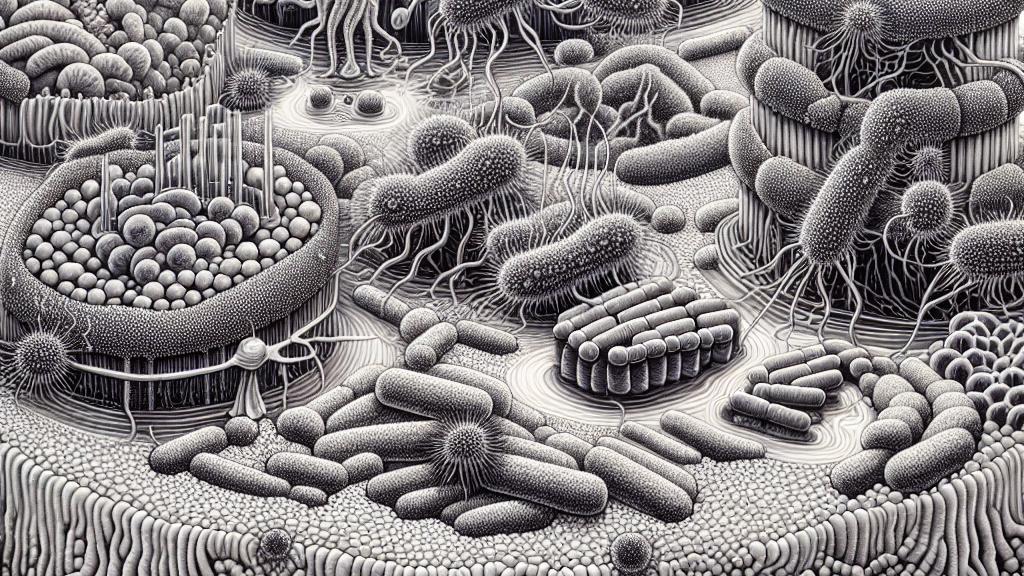Understanding the Coexistence of Bacteria in Biofilms
Overview
- Biofilms teem with diverse bacterial species that thrive together, defying common notions of competition.
- Pseudomonas aeruginosa demonstrates fascinating dispersal behavior crucial for sustaining community biodiversity.
- Investigating biofilms in realistic settings reveals insights essential for combating antibiotic-resistant infections.

Setting the Stage: Insights from Dartmouth College
In a groundbreaking study at Dartmouth College, researchers ventured deep into the captivating world of biofilms—those complex, slimy communities of bacteria. These biofilms are not just found in dirty bathtubs; they can thrive on natural surfaces like lakes and even inside the human body, particularly on medical devices. The focus was on three formidable players: Pseudomonas aeruginosa, a notorious pathogen; Escherichia coli, known for its dual nature; and Enterococcus faecalis, often linked to infections. By examining how these species interact and coexist, researchers aimed to unlock the mysteries behind serious infections that threaten patient health, particularly in fragile populations.
The Dispersal Strategy: A Dynamic Interplay
One exciting discovery was the remarkable behavior of Pseudomonas aeruginosa. Imagine this: when the biofilm grows too dense, this dominant bacterium doesn't just fight to hold its ground; instead, it opts to disperse, seeking new territories. This clever strategy not only prevents overcrowding but also allows E. coli and E. faecalis to flourish temporarily. The cycle of dominance and retreat is fascinating; it's like a dance where all parties participate. By allowing others to thrive, P. aeruginosa ensures its long-term survival within a diverse community—a shining example of how cooperation can flourish amidst competition.
Why Realism in Research Matters
Furthermore, this study underscores a vital lesson: the need for realism in microbiological research. Traditional experiments using well-mixed liquid cultures often overlook the unique interactions that occur in biofilms. In real life, these bacteria live within structured communities that are rich in texture and complexity. By studying them in conditions closer to their natural habitats, scientists can glean insights that help us understand how to combat resistant infections effectively. This research not only expands our knowledge but also illuminates crucial pathways for developing smarter therapies. After all, when it comes to understanding microbial life, context is everything!

Loading...